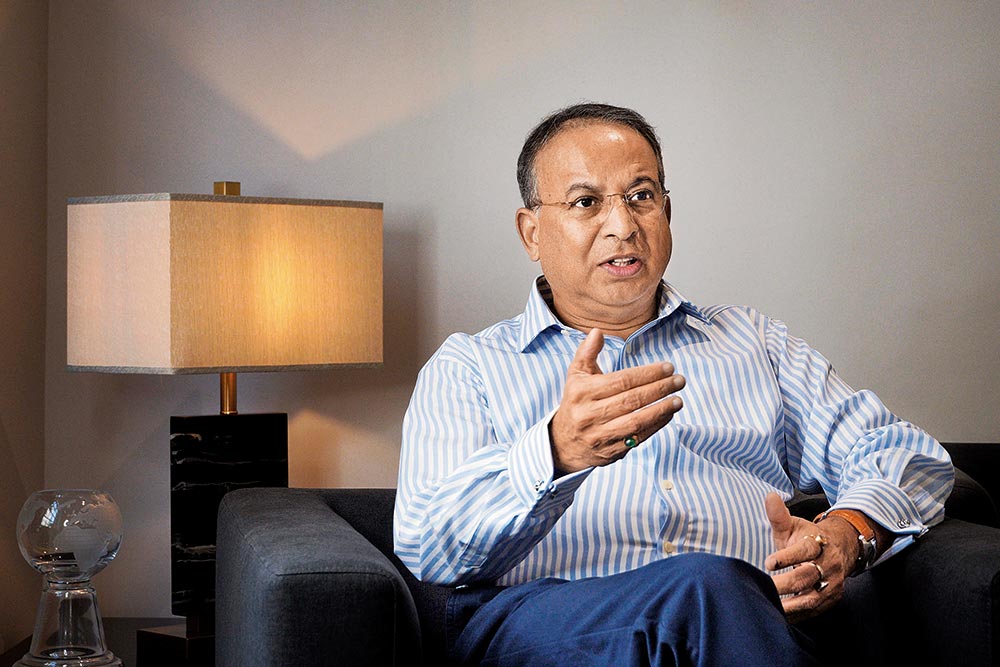What are the trends shaping the power sector right now?
The power sector has been doing very well for the last two years. There is a huge increase in demand that we have seen. Last year, the increase was nearly 10%. This year, it is around 9%–9.5%. In March and April, we saw 10% plus. The demand has been high in residential areas, both urban and rural.
What were Tata Power’s takeaways from the last fiscal?
Tata Power has been transitioning into many new areas over the last few years. One of the new areas it is looking at is how to be more consumer centric. This is reflected in our takeover of the distribution business in Odisha. The number of consumers has increased to 10 million. More and more consumers are coming into the whole power supply ecosystem.
When we went there [Odisha], many consumers had to wait six to eight months for new connections. Now, our new connections are given in less than seven days and complaints are dealt with. The quality of service has improved.
Another big thing that has happened is we have gone into renewables right across. We have also gone into manufacturing. We have set up our own solar cell and module plant. This is an enhancement of our existing capacity as we were already doing something like 600 MW [megawatt] of solar cells and modules. Through the expansion, we have added another 4.3 GW [gigawatt].
We are also big in the rooftop solar market. We have already set up more than 2,000 megawatt. We have more than 20% of the market share. With the new scheme of the government, 1 crore households will have rooftop solar. We are working very closely with the PM-Kusum programme. All our businesses have ensured that they maximise in terms of efficiency and profitability.
India’s renewable transition is entering a crucial phase. We must reach 500 gigawatt by 2030. How is the country’s capacity addition panning out?
What I want to tell you is that we need to look at it from a more directional perspective and not
get stuck on the idea that 2030 is a fixed target.
Now, just to give you a little background: India had a generation capacity of just a little more than 100 GW by the turn of the century, around 2000. By 2010, we were at about 200 GW. In 2023, we have about 420 GW. So, every 10 years, we have doubled our capacity.
People ask me if we will be able to add 500 GW by 2030. We have maybe 440 GW this year and we need to double it. Whether it happens in 2032 or 2033, it will happen in that range.
And where is that capacity going to come from? It is going to come from new sources. There are so many more hybrid projects, FDRE [firm and dispatchable renewable energy], group captive projects and pumped hydro. All these are now converging. At some stage, the increase happens at a much faster pace compared to what was done before because there is a learning curve. Once you cross that hurdle, the speed of implementation increases tremendously.
So, I do not feel that we are going to miss it [the 2030 target] by much. Directionally, we are there.
Commercial power continues to remain expensive in the country due to cross subsidisation and it impacts India’s export competitiveness. Do you think there is any scope of regulatory change to resolve this?
You rightly mentioned the impact of cross-subsidy. Without it, the cost of power for commercial or industrial users would have been much lower. Regulatory provisions already exist to ensure the average cost of supply should not vary by more than plus or minus 20% between the highest and the lowest rates. This introduces a certain sense of discipline regarding power pricing.
For instance, if the average cost of supply is Rs 5, the highest rate cannot exceed Rs 6 and the lowest cannot be less than Rs 4. These guidelines are in place, and it is crucial that they are enforced and implemented quickly. I hope that the suggested changes in the Electricity Act regarding tariff revision or rationalisation are properly executed. I believe that with these changes we will see better norms for tariff fixation.
On the distribution side of your business, do you think there is a scope for expansion if privatisation of discoms is considered and implemented?
Out of 28 states, only one state has 100% privatisation. So, for me, the market consists of 27 states and the Union Territories. That is the market and the opportunity. I do expect that the proposed changes in the Electricity Act will be implemented, whether it involves multiple suppliers of electricity, like the one we have in Mumbai or adopting public-private partnerships like in Delhi and Odisha. These models will come into play.
Many state discoms and utilities are financially very stressed. They need to address this burden, which has now shifted to state governments, affecting their finances. When there is so much leveraging, states do not have funds for development activities. This creates significant pressure on state governments to proceed with reforms. One of the big reforms I am expecting is in power distribution.
With company balance sheets having stabilised, will Tata Power look at going big in the international market?
Opportunities are available globally, but the ones present in India are much more attractive. We want to achieve scale and the Indian market is best suited in the current scenario. This is a market we understand. So, we are not looking at any project outside India.









 Just one email a week
Just one email a week